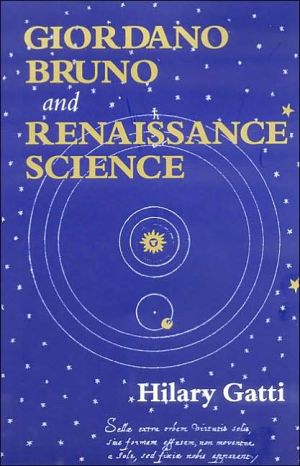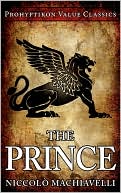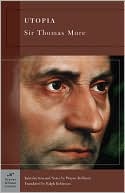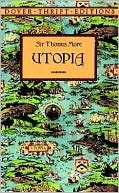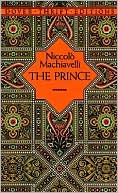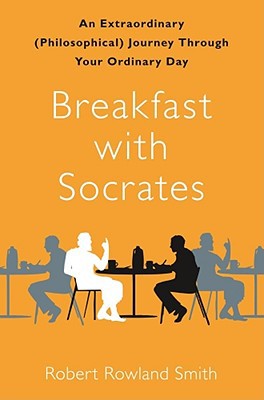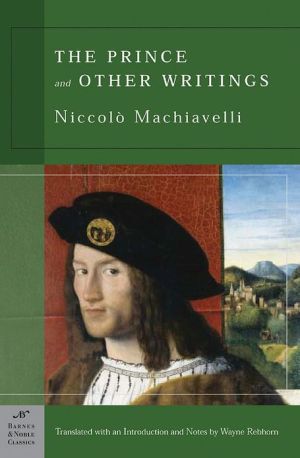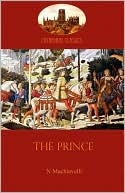Giordano Bruno and Renaissance Science
The Renaissance philosopher Giordano Bruno was a notable supporter of the new science that arose during his lifetime; his role in its development has been debated ever since the early seventeenth century. Hilary Gatti here reevaluates Bruno's contribution to the scientific revolution, in the process challenging the view that now dominates Bruno criticism among English-language scholars. This argument, associated with the work of Frances Yates, holds that early modern science was impregnated...
Search in google:
The Renaissance philosopher Giordano Bruno was a notable supporter of the new science that arose during his lifetime; his role in its development has been debated ever since the early seventeenth century. Hilary Gatti here reevaluates Bruno's contribution to the scientific revolution, in the process challenging the view that now dominates Bruno criticism among English-language scholars. This argument, associated with the work of Frances Yates, holds that early modern science was impregnated with and shaped by Hermetic and occult traditions, and has led scholars to view Bruno primarily as a magus. Gatti reinstates Bruno as a scientific thinker and occasional investigator of considerable significance and power whose work participates in the excitement aroused by the new science and its methods at the end of the sixteenth century. Her original research emphasizes the importance of Bruno's links to the magnetic philosophers, from Ficino to Gilbert; Bruno's reading and extension of Copernicus's work on the motions of the earth; the importance of Bruno's mathematics; and his work on the art of memory seen as a picture logic, which she examines in the light of the crises of visualization in present-day science. She concludes by emphasizing Bruno's ethics of scientific discovery. Booknews This is a paperbound reprint of a 1999 book. Gatti (history of science, Universitá di Roma) offers a reappraisal of Renaissance philosopher Giordano Bruno's contribution to the scientific revolution taking place in his time. He discusses how Bruno's reservations about the exactitude of science—intuitions that were out of step for several centuries—are now being seen as uncannily relevant to modern thinking. Annotation c. Book News, Inc., Portland, OR (booknews.com)
PrefaceIntroduction1Pt. IBeyond the Renaissance Magus1"The Pythagorean School and Our Own": Bruno and the Philosopher from Samos132Discovering Copernicus29Pt. IIToward a New Science3Reading Copernicus: The Ash Wednesday Supper434Beyond Copernicus: De immenso et innumerabilibus785Bruno and the Gilbert Circle866The Infinite Universe997The Infinite Worlds1158"The Minimum Is the Substance of All Things"1289Epistemology I: Bruno's Mathematics14310Epistemology II: Picture Logic17111Alienation and Reconciliation20412An Afterword: The Ethics of Scientific Discovery219Bibliography239Index251
\ From the Publisher"I consider Hilary Gatti's book to be an important contribution to our knowledge of Bruno's thought and a valuable illustration of its relevance to the epistemological crisis of science in our time."-Giovanni Aquilecchia, University College London\ "This insightful academic work helps recast Bruno in a significant role in the history of science."-Library Journal\ "Hilary Gatti reconsiders Giordano Bruno and Renaissance Science, finding him to be a catalyst for the 17th century scientific revolution. From Bruno's sparring with Copernicus to his concepts of 'Infinite Worlds' and what Gatti calls 'Picture Logic,' there is ample evidence for her contentions."-Publishers Weekly\ "Now, with persuasive force, a new book by the historian of science Hilary Gatti, Giordano Bruno and Renaissance Science, presents a bold argument for Bruno's inclusion not only within the sphere of Renaissance sciences but also within the sphere of science as it is practiced at the present time."-Ingrid D. Rowland, The New York Review of Books, February 2001\ "This book is a bold work that covers a wide range of Bruno's writings in depth and with intelligence."-David Tulloch, Victoria University of Wellington. Parergon, 17.2\ ". . . Hilary Gatti has turned the spotlight back on Bruno, Bruno as a scientific thinker, Bruno as a man whose merits are to be judged by the 'new sicience' and its methods as they were recognized at the end of the sixteenth century and as they were aopted and adapted in the decades that follow. . . .For all who wish to draw closer to an understanding of Bruno's thought processes, this book is essential reading."-J.D. North, Oxford. Speculum: A Journal of Medieval Studies, October 2001\ "The author of this balanced and well documented volume, an already experienced scholar in Bruno studies (especially on those aspects of his thought which link him to the birth and early development of modern science) deserves above all to be praised for declaring in her Preface with great clarity and determination what she means to do, and then doing it in very coherent terms."-Arcangelo Rossi, University of Leece. Brunianae e Campanelliana, 2000\ \ \ \ \ \ From The CriticsThis is a paperbound reprint of a 1999 book. Gatti (history of science, Universitá di Roma) offers a reappraisal of Renaissance philosopher Giordano Bruno's contribution to the scientific revolution taking place in his time. He discusses how Bruno's reservations about the exactitude of science—intuitions that were out of step for several centuries—are now being seen as uncannily relevant to modern thinking. Annotation c. Book News, Inc., Portland, OR (booknews.com)\ \
